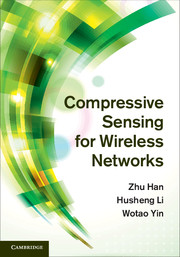Preface
Published online by Cambridge University Press: 05 June 2013
Summary
Over the past few decades, wireless communications and networking have witnessed an unprecedented growth, and have become pervasive much sooner than anyone could have predicted. For example, cellular wireless networks are expected to become the dominant and ubiquitous telecommunication means in the next few decades. The widespread success of cellular and WLAN systems prompts the development of advanced wireless systems to provide access to information services beyond voice such as telecommuting, video conferencing, interactive media, real-time internet gaming, and so on, anytime and anywhere. The enormous potential demands for these wireless services require a careful design of the future networks. Many technical challenges remain to be addressed such as limited resources, adverse natures of wireless channels, interference, etc.
Today, with the increasing demand of higher resolution and increasing number of modalities, the traditional wireless signal processing hardware and software are facing significant challenges since the Nyquist rate, which is part of the dogma for signal acquisition and processing, has become too high in many wireless applications. How to acquire, store, fuse, and process these data efficiently becomes a critical problem. The most current solution to this problem is to compress after sensing densely. However, this oversampling-then-discarding procedure wastes time, energy, and/or other precious resources.
A new paradigm of signal acquisition and processing, named compressive sensing (CS), has emerged since 2004. Starting with the publication of “Compressed sensing” by D. Donoho, and a few seminal works by E. J. Candes, J. Romberg, and T. Tao, the CS theory, which integrates data acquisition, compression, dimensionality reduction, and optimization, has attracted lots of research attention.
- Type
- Chapter
- Information
- Compressive Sensing for Wireless Networks , pp. xiii - xivPublisher: Cambridge University PressPrint publication year: 2013



